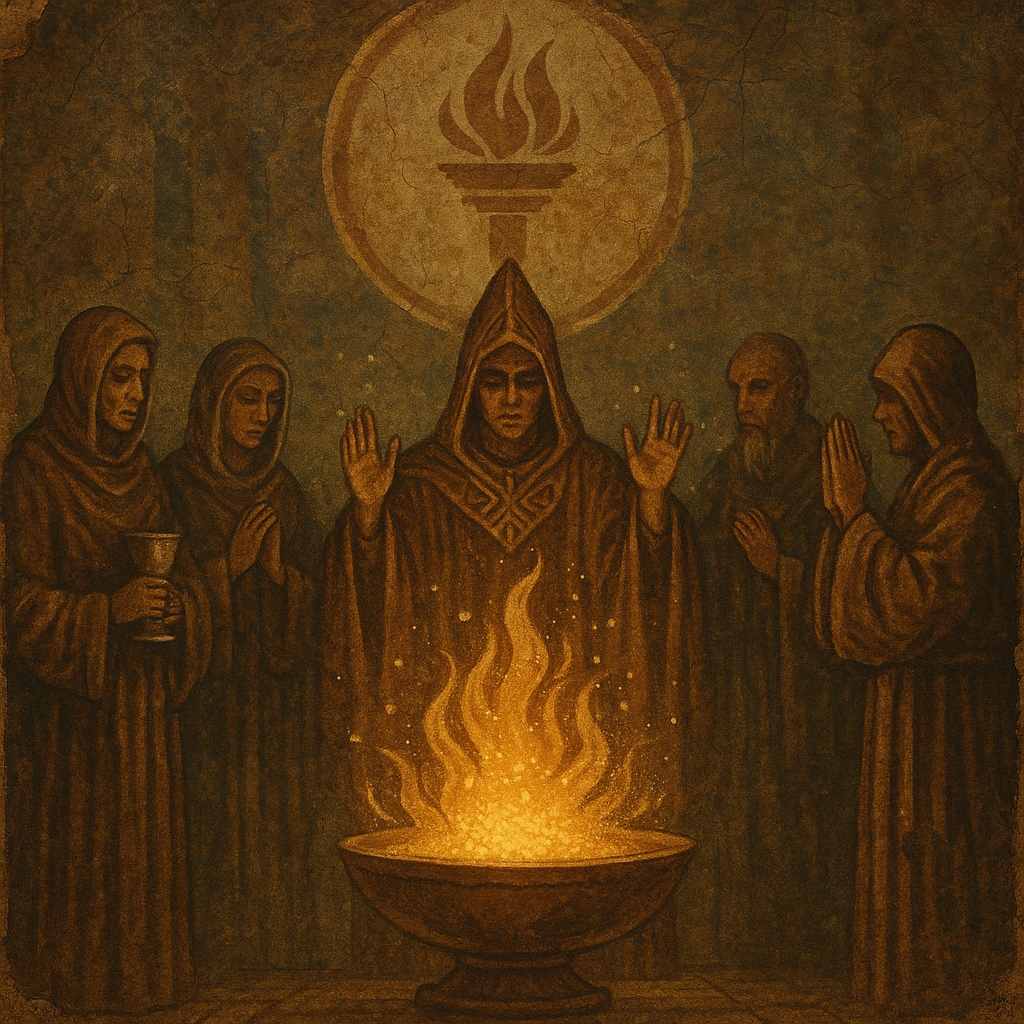Imperium Dust
“Faith in the Empire is not merely taught. It is steeped, inhaled, and worn into the bone.”
Imperium Dust is a radiant, golden particulate extracted from deep-refined Riftstone veins beneath the heart of Nova Roma. Treated through alchemical infusion and lustral flame, it becomes a sacred powder used across the Empire’s religious, military, and civic rites. Publicly revered as a symbol of unity and clarity, it is burned in imperial incense, mixed into consecrated inks, and laced into banners of state.
However, the dust possesses a second nature—one carefully guarded by the Arcanii and Senate alike. When subtly ingested, absorbed, or inhaled in refined doses, Imperium Dust dampens dissent, alters dream patterns, and enhances susceptibility to authoritative suggestion. This secret application underpins much of the Empire’s hold on volatile provinces and hesitant senators.
Properties
Material Characteristics
A glittering fine powder with a faint magnetic cling. When viewed in low light, it emits a soft inner glow that pulses to ambient sound. In fluid, it forms halo-like spirals.
Physical & Chemical Properties
- Mildly psychoactive in refined doses
- Resonance-conductive
- Flame-reactive (color shifts by tone of speaker nearby)
- Clings to skin and fabric, leaving symbolic traces
Compounds
- Oathseal Ink
- Ceremonial Bastion Incense
- Legionnaire Armor Binding Wax
Geology & Geography
Found in deep Riftstone caverns beneath Nova Roma, particularly below the Basilica Arcanii. Rare veins also discovered under the ruins of Vel Aranthil.
Origin & Source
Derived from purified Riftstone, specifically through a five-step alchemical cracking method followed by resonance-cleansing. Only the Arcanii possess full rites of extraction.
Life & Expiration
Energetically stable for centuries in sealed crystal. Loses arcane properties rapidly if exposed to salt, lead, or unfiltered sunlight.
History & Usage
History
First refined in 67 BR by the Archmage Quentus Arca while purifying Riftstone for basilica domes. Its ceremonial value was quickly embraced, though classified usage protocols were established by imperial decree within a decade.
Discovery
Originally noted by vault miners for its calming effect and luminous properties. Academic isolation and refinement performed by early Arcanii.
Everyday use
- Burned in civic rituals and tribunals
- Mixed into ink for signing Concords and legal edicts
- Scented vapor in Imperial Senate halls
Cultural Significance and Usage
Used in oaths of office, sacred readings, funerary rites, and knightly investiture. Symbolizes purity of intent, submission to order, and Imperial continuity.
Industrial Use
Smelted into glyphplate for resonance shielding; blended with lustral waxes for inscribed scrolls and imperial medallions.
Refinement
Riftstone is cracked, leached, and fired in lustral flame. Dust is gathered in soulglass canisters and sifted by clairvoyant filters.
Manufacturing & Products
- Scroll sealer wax
- Resonance ward chalk
- Senatorial hair oil (a discreet ingestion method)
Byproducts & Sideproducts
Cracking produces Silt of Unbeing, a grey residue stored beneath the Basilica under strict guard.
Hazards
Overexposure leads to: apathy, dream erosion, echo-thought loops, minor bloodsilver poisoning. Illegal dosages can induce fatal submission or cognitive erosion.
Environmental Impact
Dust clouds can deaden flora resonance in small areas. Prolonged exposure affects local beast behavior.
Reusability & Recycling
Spent dust from ceremonies is gathered and infused into Imperial Ash Bricks, used to build fort walls or votive shrines.
Distribution
Trade & Market
- Controlled by the Arcanii and Senate Concordia
- Smuggled into Concord and Riftlands at extreme risk
Storage
Sealed in soulglass phials or crystal cylinders. Must be warded against psychic bleed.
Law & Regulation
Use without imperial sanction punishable by memory-branding or death. Banned from Concord territory, though rumors suggest the Pactguard has studied it.




Comments